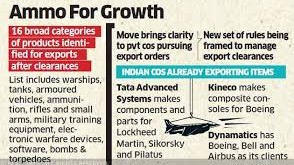The threat of terrorism is not new to transportation. From jet airliners to mass transit buses and rail terminals, vehicles and transport facilities are all-too-familiar targets of terrorist attacks. The 1995 sarin gas attack on the Tokyo subway left 13 people dead and injured 6,000 others. The terror attack was carried out by a doomsday cult. In 2004, jihadists carried out a series of coordinated bombings on Madrid’s crowded commuter trains, which left 191 people dead and nearly 2000 injured. In 2005, suicide bombers in London killed 52 people and injured hundreds.
Transportation assets are themselves been used as weapons. Using four jet airliners as cruise missiles, the September 11th attackers showed how the omnipresent air transportation system could be turned into a weapon far deadlier than ever envisioned by those charged with aviation security. The mailer of anthrax spores, capitalizing on the anonymity and reach of the postal system, showed how a seemingly innocuous transportation mode could be turned into a weapons delivery system.
Transport vehicles are ubiquitous, moving virtually unnoticed within industrial locations and major population centers; across borders; and (in the case of mail and express package services) to nearly every household, business, and government office in the country. India Railways is third largest railway network comprising 7000 railway stations, 1.30 lakh railway bridges operating 19,000 trains each day transporting 2.65 million tonnes of freight traffic and 23 million passengers each day. Al-Qaeda specifically mentions high speed trains as ideal targets for maliciously engineered derailments. Any attack on them is likely to draw considerable domestic and international attention. Al-Qaida propaganda outlet reportedly released a guide to derailing trains and attacking rail systems, which included a list of popular American train routes, including the Acela Express line through Boston, New York, and Washington.
Challenges
The transportation systems are designed to be open, efficient, and accessible which is also their main cause of their vulnerability. The traditional means of security encompassing guards, guns, and gates is expensive and demonstrably ineffective considering the vast scale and scope of the transportation systems. Determined attackers can find ways to defeat such single-tiered perimeter defences.
The size, scope, and ubiquity of the transportation sector, coupled with its myriad owners, operators, and users, generate many opportunities for terrorists to exploit it in novel ways that may not be anticipated by those traditionally responsible for transportation security
The cyber physical nature of many safety technologies – such as anti-collision systems – introduces new opportunities like cyber –attacks.
Counter terrorism strategy
Security should be provided based on comprehensive risk management framework which takes into account current and future technologies, structured approach to intelligence gathering and follow-up, rules for risk assessment etc. A threat incident database is also required which records both successful and unsuccessful attacks.
The new strategy should rely instead on layering and interleaving various defensive measures. With layering, each safeguard, even though it may be inadequate by itself, reinforces the others. A layering strategy will not only protect against vulnerabilities in transportation security, it will also deter terrorists by creating uncertainties about the chances of being caught, write Mortimer L. Downey, and Thomas R. Menzies.
This is not to say that key facilities should be left unguarded. We must identify those elements of the transportation system that require a dedication of security resources because their destruction or impairment would cause considerable harm to people and to the transportation system. Such facilities–key bridges, underwater tunnels, command-and-control centers, and the like–should be guarded, but as part of a layered system of defenses. The hardened cockpit door is not the only defense against an armed hijacker; it is the last in a series of layered defenses.
Most important, the interleaved layers can do more than protect. They can also deter, confounding the would-be attacker by making it difficult to estimate the chances of successfully breaching the many protections. The attacker might be able to seek ways of increasing the odds of defeating a single-tier protection, but calculating and overcoming the odds against beating one tier after another is next to impossible. Terrorists do not like the uncertainty that layering creates.
Understanding what deters terrorists is crucial for designing effective and efficient security systems, especially in the spread-out and heavily used transportation system. If you can’t physically protect or eliminate every vulnerability, then it is important that you find ways to deter the act in the first place. Doing so will require a fair amount of creativity and innovation in security methods. This means employing tactics such as randomizing security screening, routinely setting traps, clandestine policing, and masking detection capabilities, that effectively create layers of uncertainty and inhibit terrorist activity through what have been called “curtains of mystery,write Mortimer L. Downey, and Thomas R. Menzies.
What is sure to be important in devising security strategies for each mode of transportation is an understanding of the operations and characteristics of the transportation systems themselves. Strategies and tactics developed for one mode of transportation that are modified and applied to another may yield little, if any, benefit. The inspection and screening methods used for airline passengers and baggage in controlled settings, for instance, are ill suited to other kinds of transportation that require more open and convenient access.
Security measures
New York Gov. Andrew Cuomo in Jan 2019 announced a state advisory panel’s recommendations calling for enhanced counterterrorism measures, including stronger security at transportation facilities such as Penn Station in New York City.
The panel conducted a preliminary evaluation of the state’s counterterrorism assets, policies and security. The report recommends enhancements such as increased coordination among the state’s counterterrorism agencies and authorities; strengthened security at airports, bridges, tunnels and mass gathering sites; and additional restrictions to further limit terrorists’ access to certain lethal weapons.
“As we’ve seen time and again, terrorism is an ever-present threat, and we will do everything in our power to help ensure that New Yorkers are safe from whatever extremists try to send our way,” Cuomo said in a press release. “In order to continue to combat this changing and complex threat to New York, we will take concrete steps to implement the recommendations from our bipartisan national experts.”
The panel suggested establishing state-of-the-art command centers at Penn Station and other major transportation hubs so that law enforcement agencies can communicate in a centralized location and access real-time information before, during and after a crisis.
Some public metro system is moving towards mass screening. Shanghai’s metro now screens passenger bags and other carry-ons, said Anastasia Loukaitou-Sideris, a transit security expert at the urban planning department of the University of California Los Angeles. “There was not much of a delay,” she said.
Shanghai’s metro system serves 3.4 billion riders a year compared with New York City’s 1.8 billion, according to statistics compiled by New York’s transit system. High-speed rail lines in Europe do similar baggage screening, Loukaitou-Sideris said.
Counter terrorism technologies
There is need to identify appropriate security systems for each sort of transportation, and develop technologies that are suited to transportation settings with their security systems.
Many public and private researchers, for instance, are trying to develop sensors that can detect and alert transportation security personnel to the presence of chemicals and explosives. But how does one go about designing sensors that can detect chemicals in a busy transportation setting with myriad background materials? And how does one deploy and network such sensors so that they provide both a useful level of sensitivity and an acceptable rate of false alarms–alarms that can wreak havoc on transportation operations and that might ultimately be ignored?
It’s also critical that state agencies have access to and use new technology to protect public transit hubs and other locations, the NY counterterrorism panel recommended. To that end, the panel suggested the state should review the use and effectiveness of new and existing security technologies — including advanced cameras, explosives and hazardous materials detectors, drones and bomb disposal robots — and upgrade or procure additional technology.
References and resources also include:
https://www.theguardian.com/us-news/2017/dec/11/new-york-subway-explosion-commuter-train-rail
 International Defense Security & Technology Your trusted Source for News, Research and Analysis
International Defense Security & Technology Your trusted Source for News, Research and Analysis

